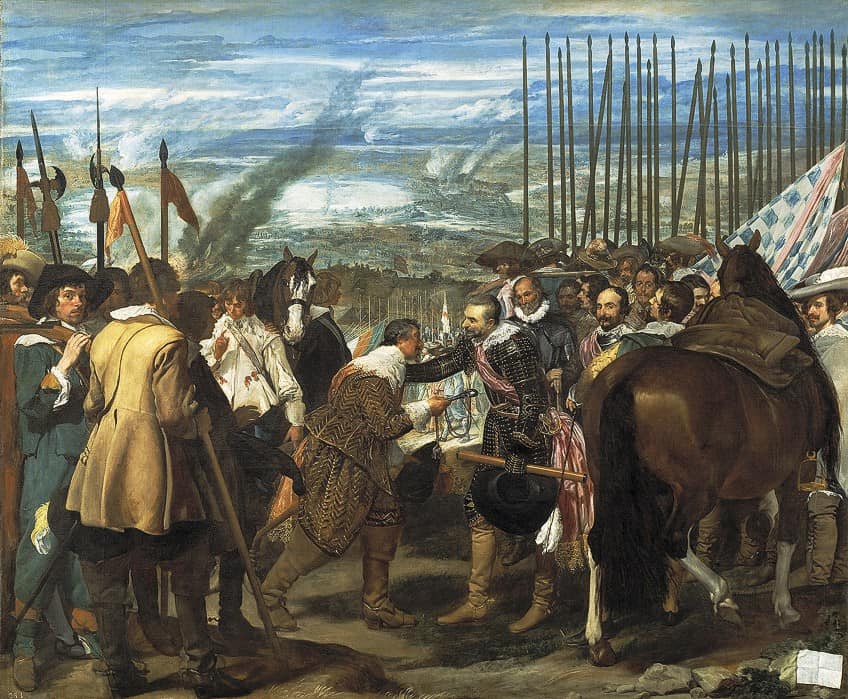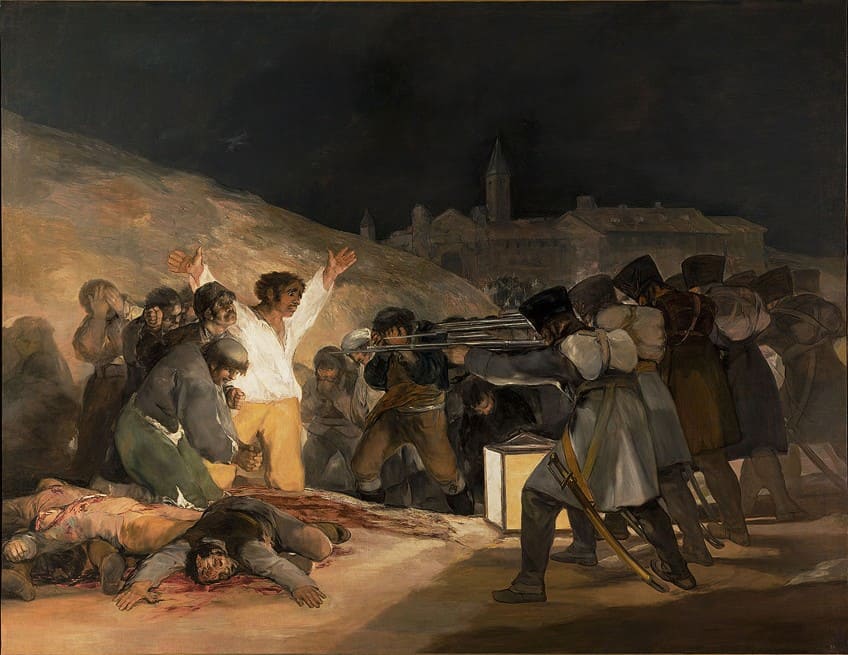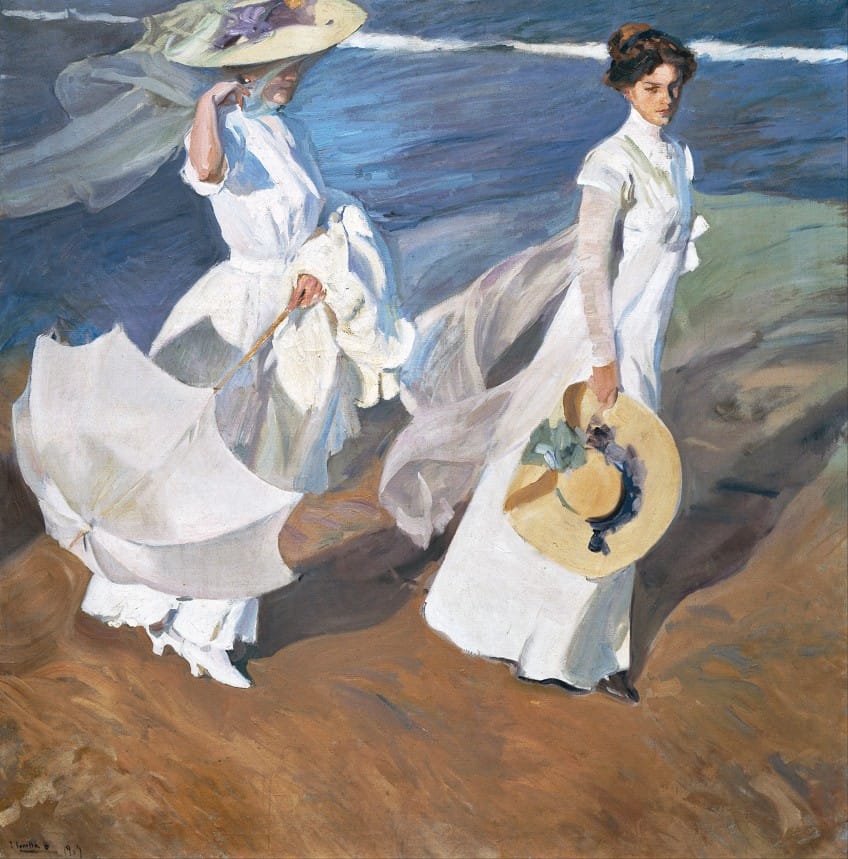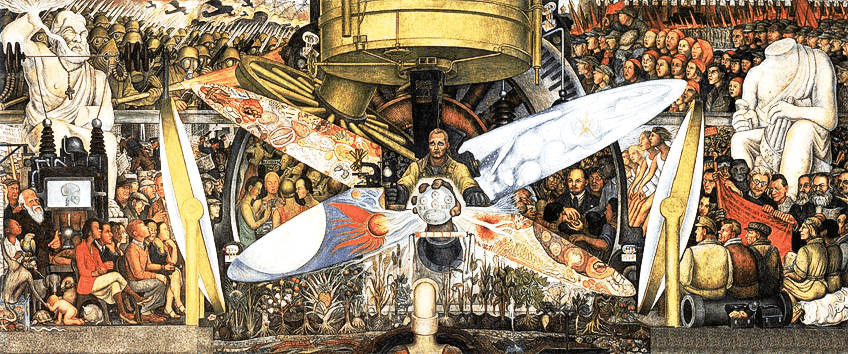Hispanic Art – Exploring Famous Hispanic Artworks and Artists
Hispanic painters have played an important role as pioneers throughout art history. Hispanic artists are known to be risk-takers and frequently included symbols and styles from their traditional native cultures. Many of the most well-known Hispanic painters utilize their work as a medium to address social and political instability to bring about change and encourage national pride. In this article, we will explore the most famous Hispanic artworks that have helped shape Hispanic art through the ages.
Contents
- 1 Famous Hispanic Artworks
- 1.1 The Surrender of Breda (1635) by Diego Velázquez
- 1.2 The Third of May 1808 (1814) by Francisco de Goya
- 1.3 Walk on the Beach (1909) by Joaquín Sorolla
- 1.4 Portrait of Picasso (1912) by Juan Gris
- 1.5 Dog Barking at the Moon (1925) by Joan Miró
- 1.6 Abaporu (1928) by Tarsila do Amaral
- 1.7 Man at the Crossroads (1933) by Diego Rivera
- 1.8 Swan Reflecting Elephants (1937) by Salvador Dalí
- 1.9 The Weeping Woman (1937) by Pablo Picasso
- 1.10 Self Portrait as a Tehuana (1943) by Frida Kahlo
- 1.11 Untitled (1982) by Jean-Michel Basquiat
- 1.12 Guerrilla de Eliseo Velasquez (1988) by Fernando Botero
- 2 Frequently Asked Questions
Famous Hispanic Artworks
Which are regarded as the most famous Hispanic paintings? And, what can famous Hispanic artworks tell us about the Hispanic people and culture? By exploring the works of famous Hispanic artists, we will discover the legacy and impact they had on the history of art.
The Surrender of Breda (1635) by Diego Velázquez
| Artist | Diego Velázquez (1599 – 1660) |
| Date Completed | 1635 |
| Medium | Oil painting |
| Current Location | Prado Museum, Madrid |
After a ten-month battle, the town of Breda in Holland succumbed to the Spaniards led by the legendary Don Ambrogio Spinola in 1625. Spinola’s success, though, was fleeting. Enemies in Madrid plotted his downfall during his 1629 military invasion in Italy, envious of his victory.
Velázquez was horrified by the unjust and terrible punishment handed out to Spinola, who died soon after. Velázquez produced this piece with this scenario in mind.
The painting was commissioned in 1635 by King Philip IV, five years after Spinola’s passing, to adorn the royal palace’s throne room, where it was part of a sequence of 12 life-size combat scenes glorifying Spanish military achievements. The artwork depicts the ceremonial handover of keys that occurred three days after the Dutch army’s official surrender at Breda.

As a result, the painting’s main focus is on the settlement rather than the conflict. The artwork’s focal point is the key being given over to Spinola by the Dutch leader, along with Spinola’s gesture of laying a hand of friendship on his adversary’s shoulder. The artwork, therefore, has two interpretations: first, it signifies a major nationalistic triumph for Spain; second, it shows Spinola’s honorable and gracious triumph. It also seems to be a memorial to Velázquez’s friend Spinola.
In addition, the artist conveys Spain’s honorable intentions as well as its force by emphasizing Spinola’s respect for Nassau and the Dutch soldiers.
The Third of May 1808 (1814) by Francisco de Goya
| Artist | Francisco de Goya (1746 – 1828) |
| Date Completed | 1814 |
| Medium | Oil on canvas |
| Current Location | Prado Museum, Madrid |
This painting depicts the circumstances surrounding the rebellion in Madrid against the French invaders. Work on the painting began in 1814, following Goya’s successful request for funding to complete the work. It was and still is a groundbreaking artwork, and it is regarded as one of the most dramatic works of contemporary art created in Spain throughout the 19th century.
However, for those who viewed it at the time it was produced, this piece of avant-garde art would have been nearly undecipherable because it disregarded all of the traditional rules of Neoclassical and Baroque historical painting.

There are no protagonists in the artwork, only victims; no great feats to admire, only brutal executions; and no great cause is memorialized, only resistance and repression. It is not known how the artwork was initially received by the public. We also don’t know when it was originally exhibited to an audience. It was kept in the Prado Museum and was not even mentioned in the catalog until 1872.
Nevertheless, it was ultimately acknowledged as a pioneering artwork with the emergence of modern painters such as Édouard Manet and the new aesthetic values promoted by the Expressionism movement.
Its reputation as an expressionist icon of the horrors of war grew throughout the 20th century, positioning it among other anti-war masterpieces of contemporary art. So, what is the artwork’s moral? What is the motivating message it conveys? Some state that Goya was implying that the people of the rebellion were martyrs through the “Christ-Crucified” pose of the protester. Others say that he was trying to say that rebellion was pointless and accomplished nothing: there is no indication that the cost of human life would result in liberation.
Walk on the Beach (1909) by Joaquín Sorolla
| Artist | Joaquín Sorolla (1863 – 1923) |
| Date Completed | 1909 |
| Medium | Oil on canvas |
| Current Location | Sorolla Museum, Madrid |
The big canvas has a nearly square framework and is particularly huge for a beach scene. Sorolla’s wife and eldest daughter are represented in life-size. Sorolla produced the scene at the seashore in Valencia, his homeland. Both females lean slightly forward, as though moving toward the right-hand side.
While the woman stands upright and parallel to the edge, her daughter has rotated her head and is staring at the observer.

Sorolla had a very successful year in 1909. He was already well-known for his works and had won awards not only in Spain but also in Germany and France. In 1909, he went to New York City with his wife and children at the request of an American art collector.
The collector had recently founded the Hispanic Society of America, and in its halls, Sorolla would present his work for the first time in the United States.
Portrait of Picasso (1912) by Juan Gris
| Artist | Juan Gris (1887 – 1927) |
| Date Completed | 1912 |
| Medium | Oil paint |
| Current Location | School of the Art Institute of Chicago, Chicago |
The artwork is a homage to Picasso, who had a significant impact on Gris’ creative career. In 1906, Gris moved to Paris and settled in the Montmartre neighborhood. A few months later, he met Pablo Picasso, who exposed him to a multitude of new artists and philosophers, including Guillaume Apollinaire, Georges Braque, Max Jacob, and Maurice Raynal. His early years in Paris were heavily focused on working as a graphic artist for satirical and political magazines. He started to paint seriously in 1910, and in the subsequent year vowed to dedicate all of his time and efforts to it.
Gris started producing works of similar quality to those of his more established contemporaries as time passed.

Gris decided to display the painting as his debut piece in the 1912 Salon of Independent Artists. Gris depicted Picasso as an artist holding a palette. To keep things basic, the artist used only cool brown, gray, and blue tones. This quality was shared by Analytic Cubism, which used a limited color palette to emphasize the form’s core structure.
The painting stood out because of the contrast between the colors that were used. Picasso is seen in the artwork sitting in a chair, dressed elegantly in a blue suit.
Gris and Picasso had become close friends, and this picture is a rare instance in which Picasso permitted Gris to create a portrait of the celebrated artist. Because it was produced by Gris and contains probably the most famous Hispanic artists to have ever existed, it is often regarded as one of the most famous Hispanic artworks ever done.
Dog Barking at the Moon (1925) by Joan Miró
| Artist | Joan Miró (1893 – 1983) |
| Date Completed | 1925 |
| Medium | Oil and pastel on canvas |
| Current Location | Museo Nacional Centro de Arte Reina Sofía, Madrid |
Figures of humans and animals are represented as undefined shapes in paintings like this one. In 1924, Miró signed the Surrealist manifesto, and the group’s members admired him for depicting the world of unconscious experience. A ladder rises towards the night sky in this barren terrain. A multicolored dog sits nearby on the brown soil, gazing up at the moon above him. The bright colors and amusing subject matter create a lighthearted, fun atmosphere.
The title of the picture contributes to this cheerful mood. The black background and large empty gaps between the ladder, dog, and moon, on the other hand, create a feeling of isolation and mystery.
While his art was constantly inspired by real locations and objects, Miró saw reality as “a site of departure, not a stopping point.” He presented a recognized scene in this piece, although the specific place is unknown. The moon, dog, and bird are also visible but warped. The ladder reaches towards nothing and rests on nothing. The painting’s initial concept had words, with the moon informing the dog that he doesn’t mind his barking.
Miró left these phrases out of the finished picture, leaving it up to the observer to envision the tale unfolding.
Abaporu (1928) by Tarsila do Amaral
| Artist | Tarsila do Amaral (1886 – 1973) |
| Date Completed | 1928 |
| Medium | Oil on canvas |
| Current Location | Private Collection |
Tarsila characterized her artwork’s subject as a huge being with massive feet sitting on a green field, the hand propping the tiny head. A cactus explodes into an odd flower in the front. This “monstrous” creature is a person. A naked, ageless, sexless person with a deformed physique.
Starting with a massive hand and foot at the bottom, the person gradually reduces to a small head.
The artwork’s backdrop depicts a natural location. Earth is represented here as a tiny green hill on which the figure rests. A cactus to the side of the being represents the vegetation, and the sky is a simple pale blue color. This artwork is regarded as the most valuable to come out of Brazil and was bought for $1.4 million in 1995.
Man at the Crossroads (1933) by Diego Rivera
| Artist | Diego Rivera (1886 – 1957) |
| Date Completed | 1933 |
| Medium | Fresco |
| Current Location | 30 Rockefeller Plaza, New York City |
The picture sparked debate since it depicted Lenin. Despite artist protestations, Nelson Rockefeller demanded its demolition before it was finished. Only black-and-white images of the original unfinished mural survive, which were shot when Rivera was compelled to cease working on it. Rivera recreated the piece in Mexico using black and white pictures. Rivera’s composition portrayed a wide range of modern scientific and social cultures.
A worker was represented in the center, managing machines. A massive hand appeared in front of him, grasping an orb representing atom combinations and dividing cells in biological and chemical creation.
Four propeller-like objects stretched from the central figure to the artwork’s corners, indicating arcs of light formed by huge lenses anchoring the right and left edges of the work. Rivera called them “elongated ellipses” biological and cosmological forces such as bursting suns and cell forms were portrayed inside them. These were the breakthroughs made possible by telescopes and microscopes. Scenes of current social life might be found within and beyond the arcs. On the left, affluent aristocratic women have been pictured playing cards and smoking.

On the right, across, Lenin is seen shaking hands with a group of multi-racial workers. Soldiers and war apparatus were seen on the upper left, above the aristocratic women, and a May Day demonstration with red banners could be seen on the right, above Lenin. For Rivera, this reflected two opposing societal visions: the “debauched affluent” being observed by the destitute as war rages, and Lenin’s communist ideal. Figures observing the core picture were depicted beyond the massive lenses to the right and left, behind which were colossal classical sculptures.
The one on the left portrays an enraged Jupiter, whose uplifted hand clutching a bolt of thunder has been hit by lightning. The one on the right was a sitting Caesar without a head.
Rivera saw them as the substitution of superstition with a scientific understanding of nature, and the defeat of authoritarian government by freed workers. The bottom section of the painting was intended to portray the regulated growth of natural riches in the shape of a range of plants rising from their roots, which were visible in a cut-away perspective under the earth. This part, unfortunately, was never completed. It can only be found in a subsequent reproduction of the composition in Mexico.
Swan Reflecting Elephants (1937) by Salvador Dalí
| Artist | Salvador Dalí (1904 – 1989) |
| Date Completed | 1937 |
| Medium | Oil painting |
| Current Location | Private Collection |
This piece was created during Salvador Dalí’s “Paranoic-critical” era. Salvador Dalí, inspired by Freud, would generate paranoia to enable his brain to make invisible connections between items. Salvador Dalí employs double images to transform delicate swans into massive, land-locked beasts in this piece. Water, as in several of his earlier paintings, is used to reflect alternate realms.
In this technically outstanding artwork, the trees of the Catalan countryside blend with the swans’ reflection to form elephants.
The elephants carry the swans over the barren countryside, as a lone man fades into the backdrop, his back to the action. This incredible artwork is presently in the possession of a private collector. Many scholars debate the work’s integral meaning, while others maintain that it is simply a demonstration of Surrealist ingenuity and is still regarded as among the most famous Hispanic paintings to be produced.
The Weeping Woman (1937) by Pablo Picasso
| Artist | Pablo Picasso (1881 – 1973) |
| Date Completed | 1937 |
| Medium | Oil on canvas |
| Current Location | Tate Modern, London |
This piece is seen as a thematic extension of Picasso’s epic masterpiece that portrayed Guernica’s tragic war. Picasso was no longer portraying the direct impacts of the Spanish Civil War, but instead referring to a solitary universal representation of pain by centering on the figure of a lady weeping.
Picasso’s urge that we project ourselves into this woman’s pained face, into her black eyes, was a reaction to reading newspaper articles about the Luftwaffe bombardment of Guernica during the Spanish Civil War in 1937.
Picasso created this painting as the final in a series of protest works. Dora Maar, who was practicing as a professional photographer when the artist met her in 1936, was the model for the artwork, and in fact for the rest of the series.
Self Portrait as a Tehuana (1943) by Frida Kahlo
| Artist | Frida Kahlo (1907 – 1954) |
| Date Completed | 1943 |
| Medium | Oil on canvas |
| Current Location | Private Collection |
This well-known Hispanic artwork exhibits Frida Kahlo’s remarkable skill in self-portraiture and is emblematic of the situations in her life at the time of its production. Kahlo began this work in 1940 but did not finish it until 1943 because she was facing marital troubles with Diego Rivera, who was infamous for his extramarital affairs. The two separated in 1940 after 10 years together – a relationship that was tumultuous from the start.
This artwork is essentially Frida Kahlo’s attempt to win back Diego while also conveying her sadness over their divorce.

Even though he had slept around, she adored him and couldn’t get him off her mind. Kahlo depicted herself in native Tehuana clothing because Diego adored this kind of clothing. As many Hispanic artists have done, Kahlo has featured aspects of her native culture in contemporary artwork. Tehuana was a popular style of traditional clothing in the pre-Hispanic era. The two never reconnected, despite all of her attempts.
While this caused her a significant amount of sadness and suffering, it did motivate her to create this beautiful portrait along with others from her iconic collection of works.
Untitled (1982) by Jean-Michel Basquiat
| Artist | Jean-Michel Basquiat (1960 – 1988) |
| Date Completed | 1982 |
| Medium | Acrylic and spray paint |
| Current Location | Private Collection |
Jean-Michel Basquiat is one of the most well-known contemporary artists. He is well-known for his stunning, colorful compositions that closely resemble the culture and atmosphere of a place related to the particular subject of his works.
This picture is reminiscent of the graffiti and street art that covered much of New York and other major international hubs of business and culture in the 1980s.
The artwork depicts a huge and brilliant skull-like figure encircled by vivid blue and other colors that truly capture the viewer’s attention towards the center of the image. The work has long been associated with controversy, yet it has commanded a substantial price at auctions in recent years, with estimates of $110 million or more.
Guerrilla de Eliseo Velasquez (1988) by Fernando Botero
| Artist | Fernando Botero (1932 – Present) |
| Date Completed | 1988 |
| Medium | Oil painting |
| Current Location | Museo Botero, Bogota |
Fernando Botero is widely regarded as one of the most accomplished and famous Hispanic artists of the contemporary age, and his works appear to represent much of Hispanic culture uniquely when contrasted to other famous Hispanic painters.
This artwork was completed in 1988 and depicts one of Columbia’s most important battles, during which a band of guerrilla fighters commanded by a brilliant tactician and leader called Eliseo Velasquez ruled most of the country.

This image depicts a horde of massive individuals camping deep in the Colombian forest. Many of the men had fallen asleep following what appeared to be an intense campaign of the battle against enemy troops. While the others sleep, two of the guerilla warriors stand guard.
That wraps up our look at the famous Hispanic artworks created by renowned Hispanic painters. Thanks to these famous Hispanic paintings, we now have a better understanding of the social, personal, and political lives of the world’s most famous Hispanic artists. Some of them fused elements of their native cultures into their works while others created artistic social commentary about the world around them. Hispanic painters have always been known to push creative boundaries – no matter what genre they create in.
Take a look at our Hispanic painters webstory here!
Frequently Asked Questions
What Does Hispanic Art Mean?
Hispanic art refers to the artworks created by Hispanic painters who live in Central and South America. These areas speak Spanish, hence why they are called Hispanic artists. Many people confuse Hispanic and Latino, but one group speaks Spanish and the other does not.
What Are the Themes of Hispanic Art?
Spain has a long history, and so too does its art. Hispanic painters have lived through many centuries of political and social upheaval, and therefore, many of them witnessed the atrocities of war first-hand and sought to depict the effects thereof. Others wanted to portray their customs and traditions. However, many Hispanic artists simply create artwork of high quality that cover the same topics as the rest of the world and don’t define themselves by their nationality.
Jordan Anthony is a Cape Town-based film photographer, curator, and arts writer. She holds a Bachelor of Art in Fine Arts from the University of the Witwatersrand, Johannesburg, where she explored themes like healing, identity, dreams, and intuitive creation in her Contemporary art practice. Jordan has collaborated with various local art institutions, including the KZNSA Gallery in Durban, the Turbine Art Fair, and the Wits Art Museum. Her photography focuses on abstract color manipulations, portraiture, candid shots, and urban landscapes. She’s intrigued by philosophy, memory, and esotericism, drawing inspiration from Surrealism, Fluxus, and ancient civilizations, as well as childhood influences and found objects. Jordan is working for artfilemagazine since 2022 and writes blog posts about art history and photography.
Learn more about Jordan Anthony and about us.
Cite this Article
Jordan, Anthony, “Hispanic Art – Exploring Famous Hispanic Artworks and Artists.” artfilemagazine – Your Online Art Source. October 12, 2022. URL: https://artfilemagazine.com/hispanic-art/
Anthony, J. (2022, 12 October). Hispanic Art – Exploring Famous Hispanic Artworks and Artists. artfilemagazine – Your Online Art Source. https://artfilemagazine.com/hispanic-art/
Anthony, Jordan. “Hispanic Art – Exploring Famous Hispanic Artworks and Artists.” artfilemagazine – Your Online Art Source, October 12, 2022. https://artfilemagazine.com/hispanic-art/.



